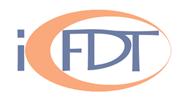Speaker
Ms
Darya Ivanova
(Alfvén Laboratory, KTH, Association EURATOM-VR, 100 44 Stockholm, Sweden)
Description
Metallic mirrors will be essential components of all optical systems for plasma diagnosis in a reactor-class device. First Mirror Test (FMT) has been carried out at JET on the request of the ITER Design Team. Up to date two exposures have been performed in JET with carbon walls: 35 h of plasma operation (Step 1 in 2005-2007) and recently accomplished Step 2 (2008-2009): 45 h exposure with 32.7 h of X-point operation. The entire test (i.e. two steps) was performed with over 60 mirrors made of stainless steel (16 samples only in Step 1) polycrystalline molybdenum (Mo-poly) including 4 specimens coated with a 1 µm thick layer of rhodium (Rh). Mirrors were installed in carriers (cassettes with channels) placed on the outer wall and in the divertor: inner leg, outer leg and base plate under the load bearing tile. Before and after exposure mirrors underwent detailed surface analysis with optical methods and ion and electron spectroscopy.
The aims of this work are: (a) to provide an overview of results based on the outcome of the two campaigns; (b) to discuss the performance of Rh-coated mirrors; (c) to consider options for mirror maintenance and cleaning in a steady-state reactor. Essential results are summarized by several points.
Divertor: Reflectivity of all mirrors in the divertor region has been degraded by 80-90 %. It is caused by deposition of thick (> 35 µm), flaking-off coatings on surfaces. The growth of a new layer is observed in places where such thick deposit peeled-off. This leads to dust formation and large local differences in surface roughness and composition.
Outer Wall (midplane): The most important result is that only small reflectivity losses (5-10 %) occur on Mo-poly mirrors at the channel mouth. This is due to the in-situ removal of deposited species by charge exchange (CX) neutrals.
Composition: Deuterium and 12C are the main species detected on surfaces, but other isotopes (9Be and 13C) are also found in some locations thus indicating differences in the material migration.
Rh-coatings have 30% better initial reflectivity than Mo-poly. The coatings survived the test without detachment from the Mo substrate, but co-implantation of D and impurity atoms in mirrors on the outer wall caused material mixing: resultant reflectivity of pure Mo and Rh-coated mirrors was the same. It may indicate a limited use of coated mirrors.
Deposition in channels in the divertor cassettes is pronounced at the very entrance; the deposition sharply decreases with depth in the channel, decay length ~ 5-7 mm.
Implications of these results for first mirrors and their maintenance in a reactor-class device with carbon components will be discussed. The preparation for the next step of FMT in JET with the ITER-Like Wall will also be presented.
Primary author
Ms
Darya Ivanova
(Alfvén Laboratory, KTH, Association EURATOM-VR, 100 44 Stockholm, Sweden)
Co-authors
A. Schmidt
(IEF, Forschungszentrum Jülich, Association EURATOM-FZJ, Germany)
A. Widdowson
(CCFE/EURATOM Fusion Association, Culham Science Centre, Abingdon, OX14 3DB, UK)
G. De Temmerman
(FOM Institute for Plasma Physics, Rijnhuisen, NL-3439 MN Nieuwegein, The Netherlands)
J. Likonen
(Asssociation EURATOM-TEKES, VTT, PO Box 1000, 02044 VTT, Espoo, Finland)
J. P. Coad
(CCFE/EURATOM Fusion Association, Culham Science Centre, Abingdon, OX14 3DB, UK)
L. Marot
(Department of Physics, University of Basel, Association EURATOM – CRPP, Switzerland)
Marek Rubel
(Alfvén Laboratory, KTH, Association EURATOM-VR, 100 44 Stockholm, Sweden)

